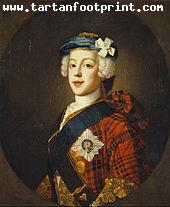You seem to be using an older version of Internet Explorer. This site requires Internet Explorer 8 or higher. Update your browser here today to fully enjoy all the marvels of this site.
June 20, 2018 by Alexander Meldrum
Bonnie Prince Charlie
Charles Edward Louis John Casimir Sylvester Severino Maria Stuart (31 December 1720 – 31 January 1788) was the elder son of James Francis Edward Stuart, grandson of James II a...Bonnie Prince Charlie
Charles Edward Louis John Casimir Sylvester Severino Maria Stuart (31 December 1720 – 31 January 1788) was the elder son of James Francis Edward Stuart, grandson of James II and VII and after 1766 the Stuart claimant to the throne of Great Britain.
During his lifetime, he was also known as "The Young Pretender" or "The Young Chevalier" and in popular memory as "Bonnie Prince Charlie".
He is best remembered for his role in the 1745 rising; defeat at Culloden in April 1746 effectively ended the Stuart cause and subsequent attempts such as a planned French invasion in 1759 failed to materialise.
His escape from Scotland after the uprising led him to be portrayed as a romantic figure of heroic failure in later representations.
Early life
Charles was born in the Palazzo Muti, Rome, Italy, on 31 December 1720, where his father had been given a residence by Pope Clement XI.
He spent almost all his childhood in Rome and Bologna. He was the son of the Old Pretender, James, son of the exiled Stuart King James VII and II, and Maria Clementina Sobieska, the granddaughter of John III Sobieski, most famous for the victory over the Ottoman Turks in the 1683 Battle of Vienna.
He had a privileged childhood in Rome, where he was brought up Catholic in a loving but argumentative family.
As the legitimate heirs to the thrones of England, Scotland, and Ireland—according to the Jacobite succession—his family lived with a sense of pride and staunchly believed in the divine right of kings.
Regaining the thrones of England, Ireland and Scotland for the Stuarts was a constant topic of conversation in the household, principally reflected in his father's often morose and combative moods.
His grandfather, James II of England, Ireland and VII of Scotland, ruled the countries from 1685 to 1688. He was deposed when Parliament invited the Dutch Protestant William III and his wife Princess Mary, King James' eldest daughter, to replace him in the Revolution of 1688.
Many Protestants, including a number of prominent parliamentarians, had been worried that King James aimed to return England to the Catholic fold.
Since the exile of James, the "Jacobite Cause" had striven to return the Stuarts to the thrones of England and Scotland, which were united in 1603 under James VI and I, with the parliaments joined by the Acts of Union in 1707 as the United Kingdom of Great Britain.
Charles Edward played a major part in the pursuit of this goal. In 1734, Charles Edward observed the French and Spanish siege of Gaeta, his first exposure to war.
His father managed to obtain the renewed support of the French government in 1744, whereupon Charles Edward travelled to France with the sole purpose of commanding a French army that he would lead in an invasion of England.
The invasion never materialised, as the invasion fleet was scattered by a storm. By the time the fleet regrouped, the British fleet realised the diversion that had deceived them and resumed their position in the Channel.
Undeterred, Charles Edward was determined to continue his quest for the restoration of the Stuarts.
Death and burial
Charles died in Rome on 31 January 1788, aged 67, of a stroke.[19] He was first buried in the Frascati Cathedral, where his brother Henry Benedict Stuart was a bishop.
At Henry's death in 1807, Charles's remains (except his heart) were moved to the crypt of St. Peter's Basilica in the Vatican where they were laid to rest next to those of his brother and his father.
His mother is also buried in St. Peter's Basilica. His heart remained in Frascati Cathedral, where it is contained in a small urn beneath the floor under a monument.
go to Wikipedia for full life history
In this photo:


